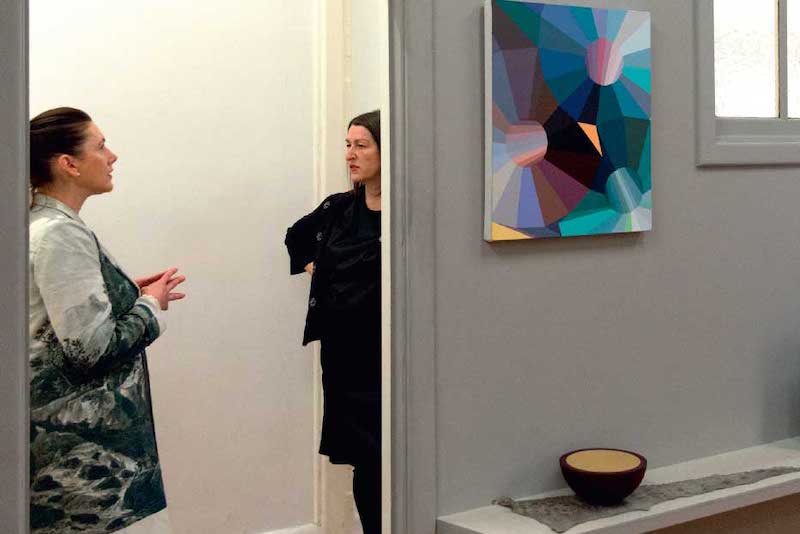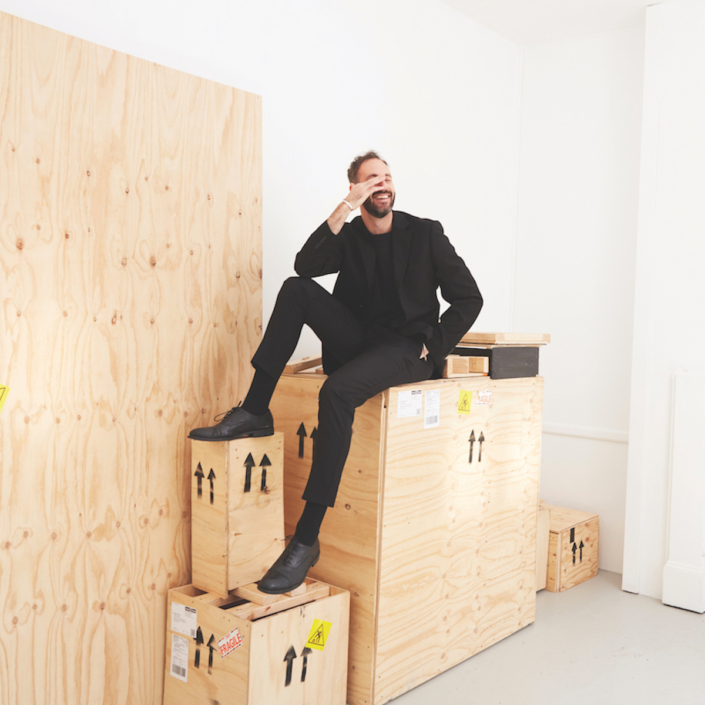Sarah Scout Presents: Closing the Gap
Sarah Scout Presents occupies premises in Melbourne that allow the gallerists to present work the way a collector might live with it.
Words: Briony Downes
Photography: Kirstin Gollings
Vikki McInnes and Kate Barber established Sarah Scout Presents to make up for a per-ceived lack in the commercial gallery sector. Seven years on their gallery is one of Aus-tralia’s most interesting. McInnes and Bar-ber together navigate the challenging role of commercial art gallery directors, while maintaining careers in the public gallery sector – Bar-ber as Audience development and public programs officer at Monash University Museum of Art (MUMA) and McInnes as Research development fellow at Vic-torian College of the Arts (VCA), while continuing their involvement with Spring 1883, the quirky hotel room-based art fair.
McInnes explains the impetus behind starting Sarah Scout Presents. “When we set out and established the gallery we were thinking about a few things and lacks were one of them.” What the new directors were trying to reconcile was the gap between the high ratio of women attending art schools 70/30 at Monash and 60/40 at VCA and the small number of women represented by commercial galleries and the disproportionately low number of women artists work in the major institutions.
The gallery “came out of wanting to provide opportunities that didn’t exist, particularly professional paths for women artists. That situation isn’t changing and I feel like we have still got more work to do. Additionally, a lot of the collectors are men. That is changing, a lot of our key clients are women these days.”
In selecting artists the new directors found that most of the artists they wished to represent were practice led. Barber explains, “Practice led is very much about artists, their materials and their process. For some when we talked about representing them – and Susan Jacob comes to mind – they said I don’t actually have work, she was working site specifically, often intervening into pre existing spaces and there wasn’t actually art product to be sold. It involved them thinking a bit differently about their practices.”
Thinking a bit differently was also true for the new gallerists. Kate says their hunt for the right gallery space is a case in point, “when we started looking we had a very slick, modernist New York space in mind but we quickly realized that those sorts of places were out of our reach. We ended up being offered a space above the Job Warehouse in one of Melbourne’s few remaining Georgian buildings – quite large domestic spaces with fireplaces and windows looking out over Bourke Street, we suddenly realized that this could be a real point of difference, having spaces that were domestic in nature. To present work in a way that you might imagine living with it.”
Now situated in a suite of seven rooms ‘the Paris end’ of Collins Street, Barber says it has the feel of a large apartment and it “continues our interest in presenting work in domestically scaled places. We have differentiated the salon or the stock space from the exhibition space. We painted out an internal space in a mid-grey quite a beautiful tone to present work against.”
Naming the gallery was not an easy task. The women joke that using their surnames, in either order, Barber McInnes or McInnes Barber made them sound like a crusty old Scottish law firm. McInnes came up with “Sarah Scout Presents” which combines their daughters’ middle names and according to Barber immediately “sounded like a place I wanted to go.”
SSP now represents 21 artists (80 percent women) and has had notable success in placing their works within the major institutions’ collections.
McInnes puts this success down to their careers in the public gallery sector “where we had very firm and established networks. All the artists we chose to work with even though they hadn’t been represented, were very active in the community and their work was being shown in ARI’s, ACCA and the MCA, institutions that the collecting institutions feed from. For us it was the private collectors that were the big learning curve.”
Art fairs are a good way to take art to private collec-tors and SSP has participated in fairs in Auckland, India, Melbourne and of course Spring 1883 in Melbourne and Sydney. Barber is optimistic about this year’s event “Spring is going ahead this year, despite the cancella-tion of the Melbourne Art Fair, which came as a shock and disappointment. We are very conscious that we established ourselves as a satellite art fair and that we now find ourselves with no planet to orbit around. It was alarming but there was never any question that we wouldn’t run.”
This article was originally published in Art Collector issue 77, JUL-SEP 2016.






